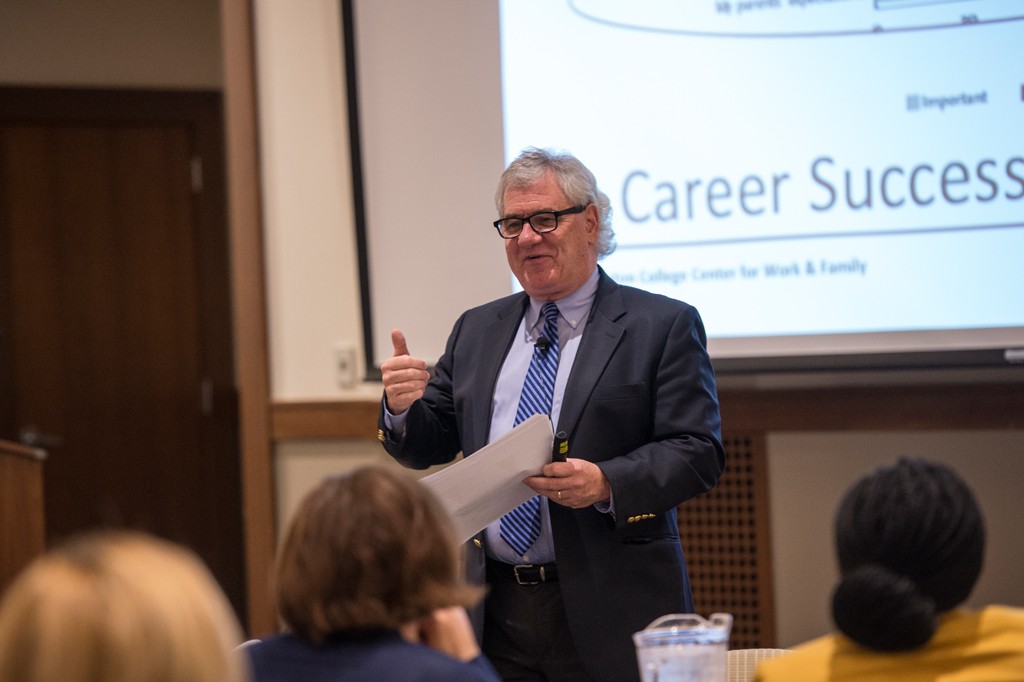BCCWF Presentation Series
The Boston College Center for Work & Family is proud to offer a series of custom presentations that are available to any employers who are interested in our focus areas. Since our founding in 1990, our staff has worked with many of the world’s best employers and leading academics to research, develop programming and share expertise on workplace initiatives, programs and culture that will provide the optimal employee experience.
Trends in Leading Today's Workforce
Our staff has presented on these topics to a range of groups — from human resource departments, to employee resource groups, to management teams and the general employee population.
The past several years have seen unprecedented changes in the way we think about work and the workplace, and the team at the Center has witnessed firsthand the many challenges facing workers and leaders.
In response to this demand, our team has launched our BCCWF Presentation Series, Trends in Leading Today's Workforce, which offers custom presentations that are available to any employers who are interested in our focus areas, including work-life, flexibility, caregiving, inclusion, well-being and workforce development.
Available to
Premier members
Core members
Non-member companies
Available presentations include:
- 2025 Trends
- Supporting Working Caregivers
- Belonging: More than a Buzzword
- Building a Culture of Well-being
- Women’s Career Advancement Strategies
- The Evolving Role of Working Fathers
- Supporting LGBTQ+ Employees
- Leveraging ERGs to Promote Belonging


